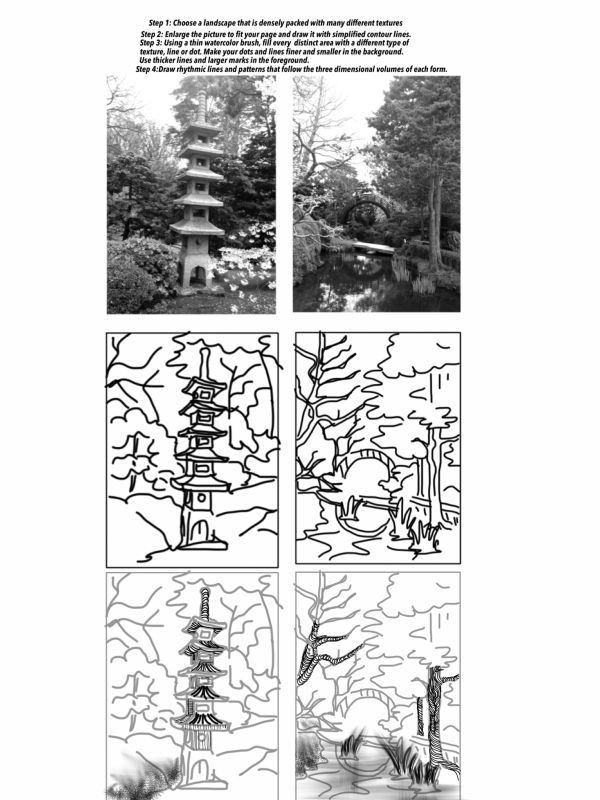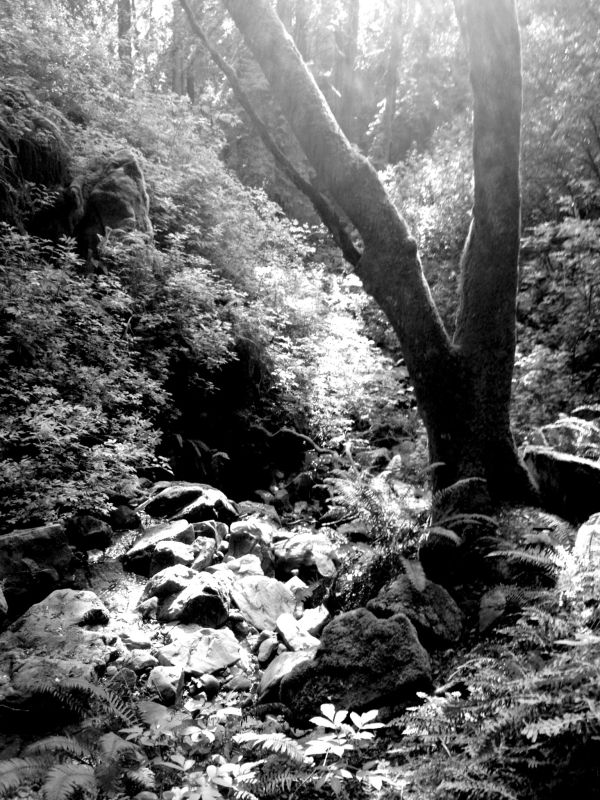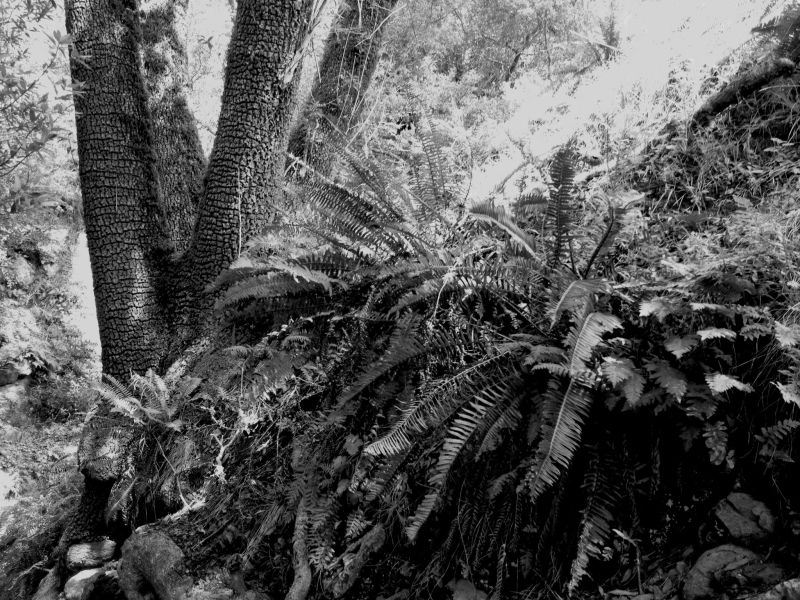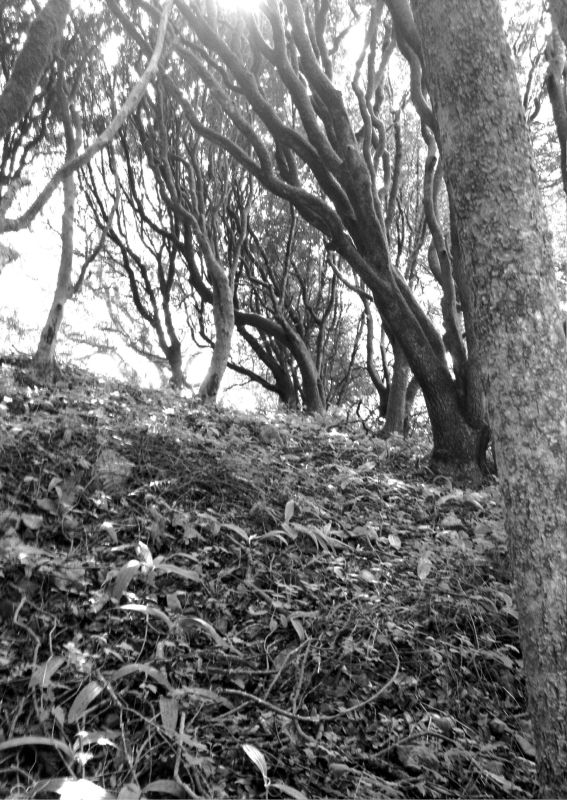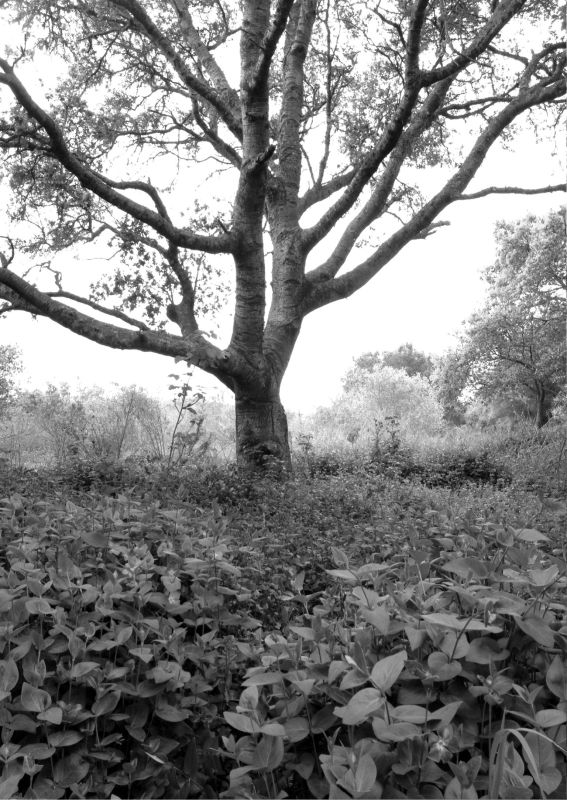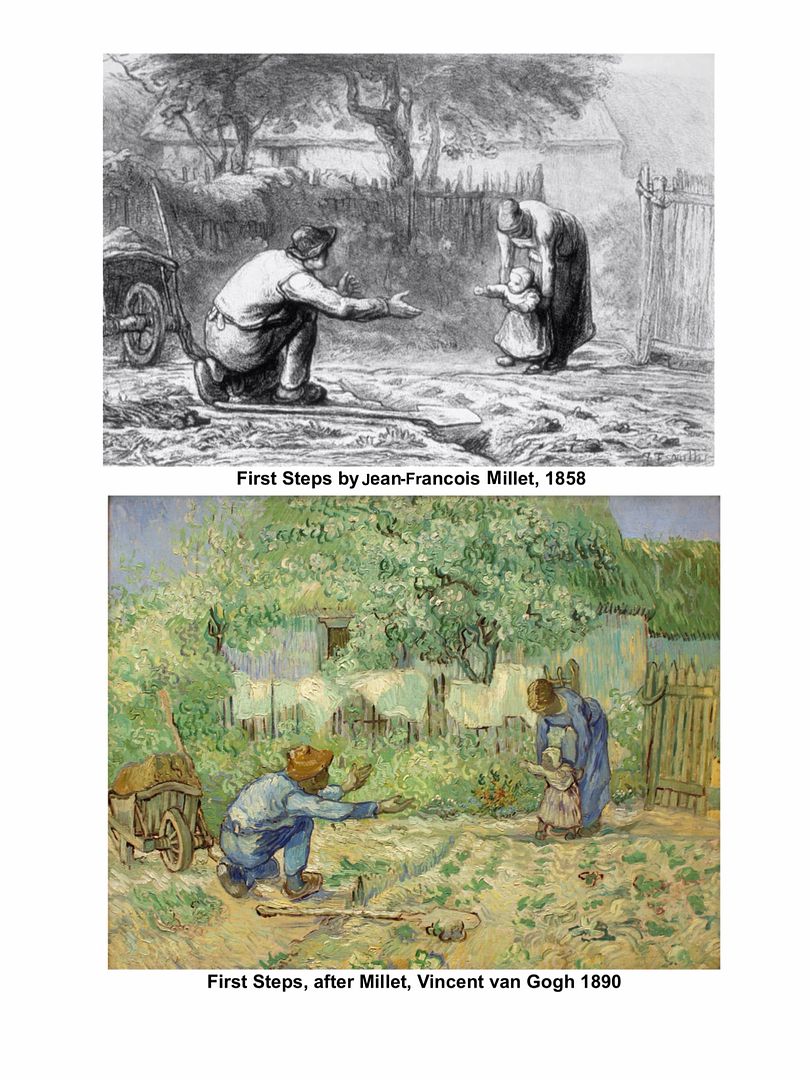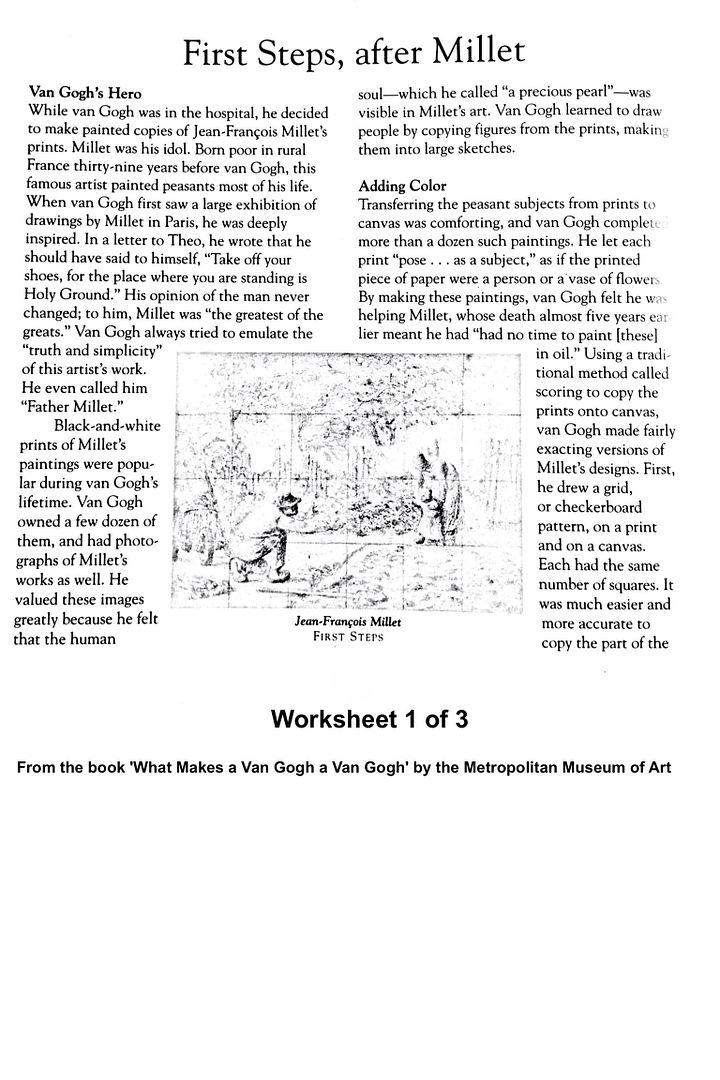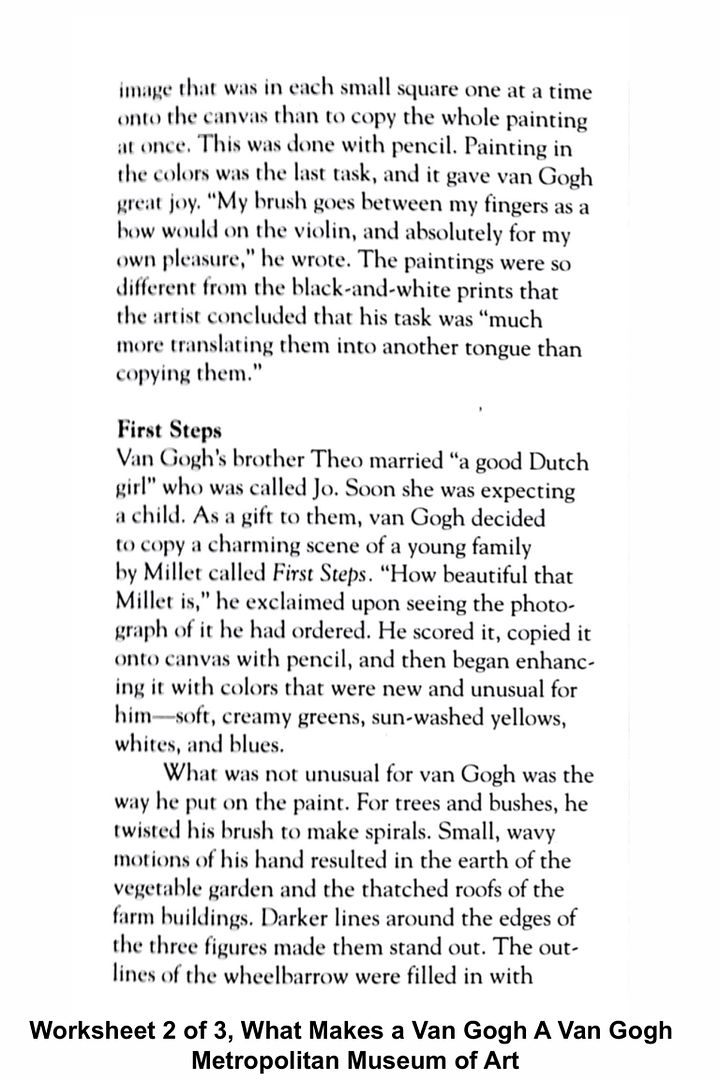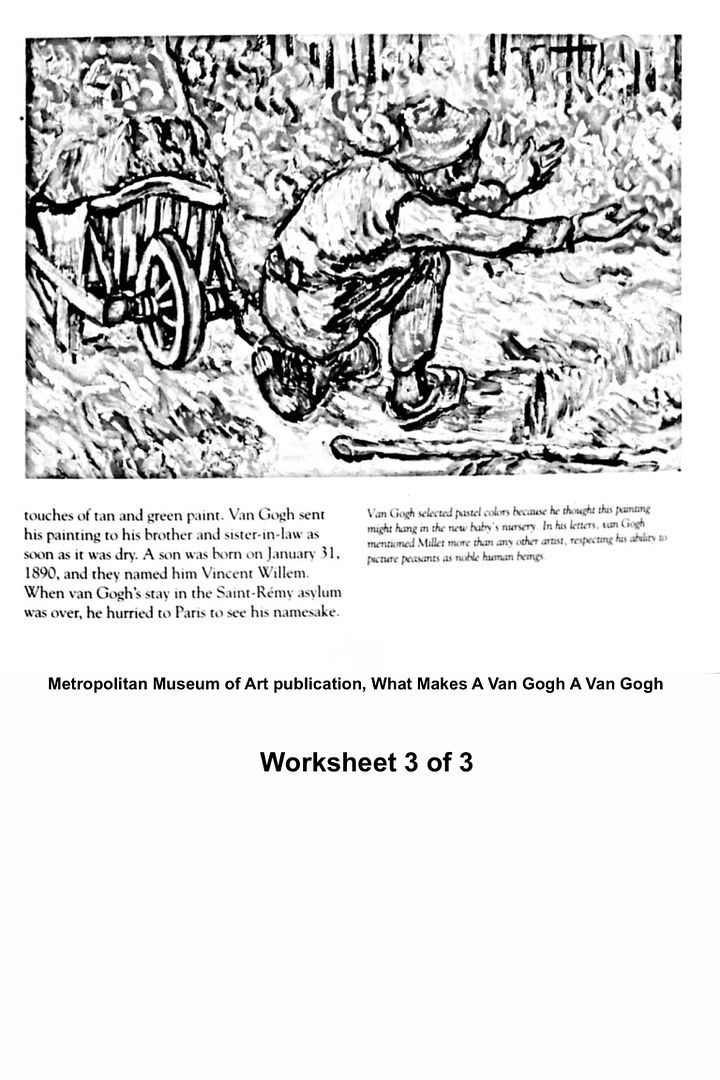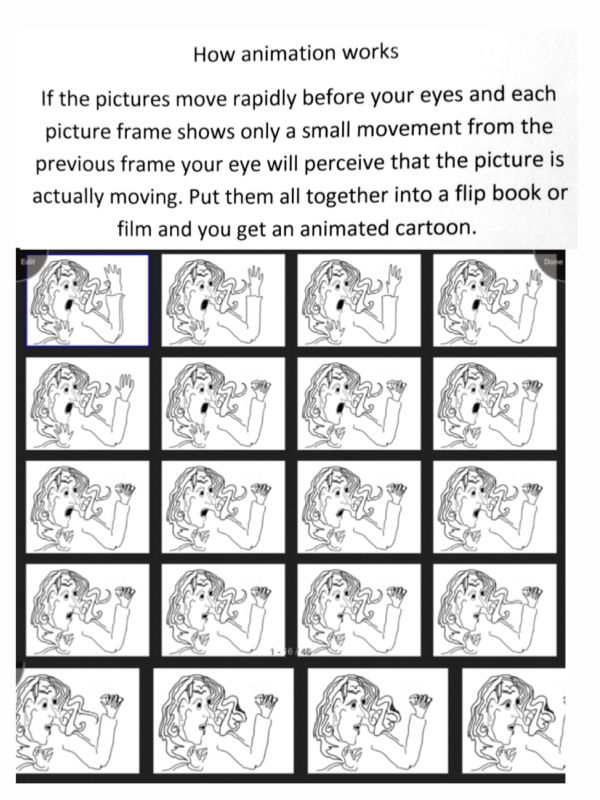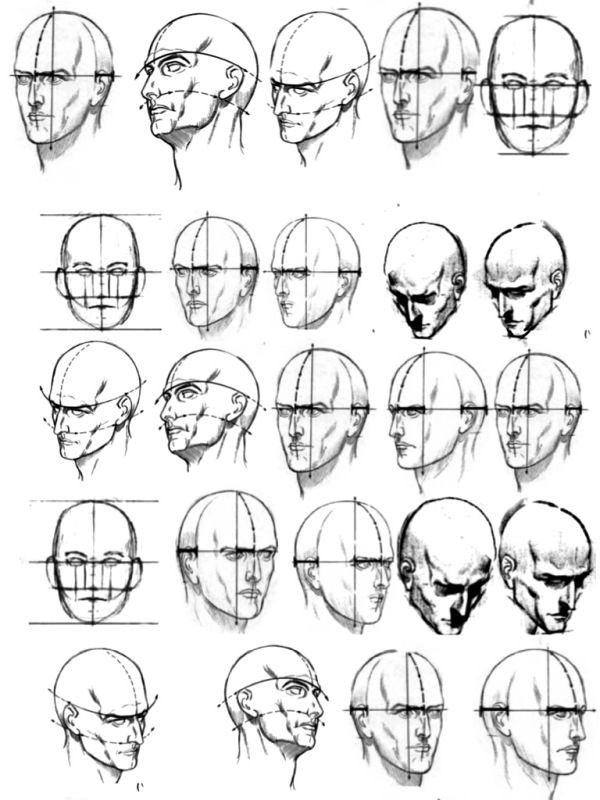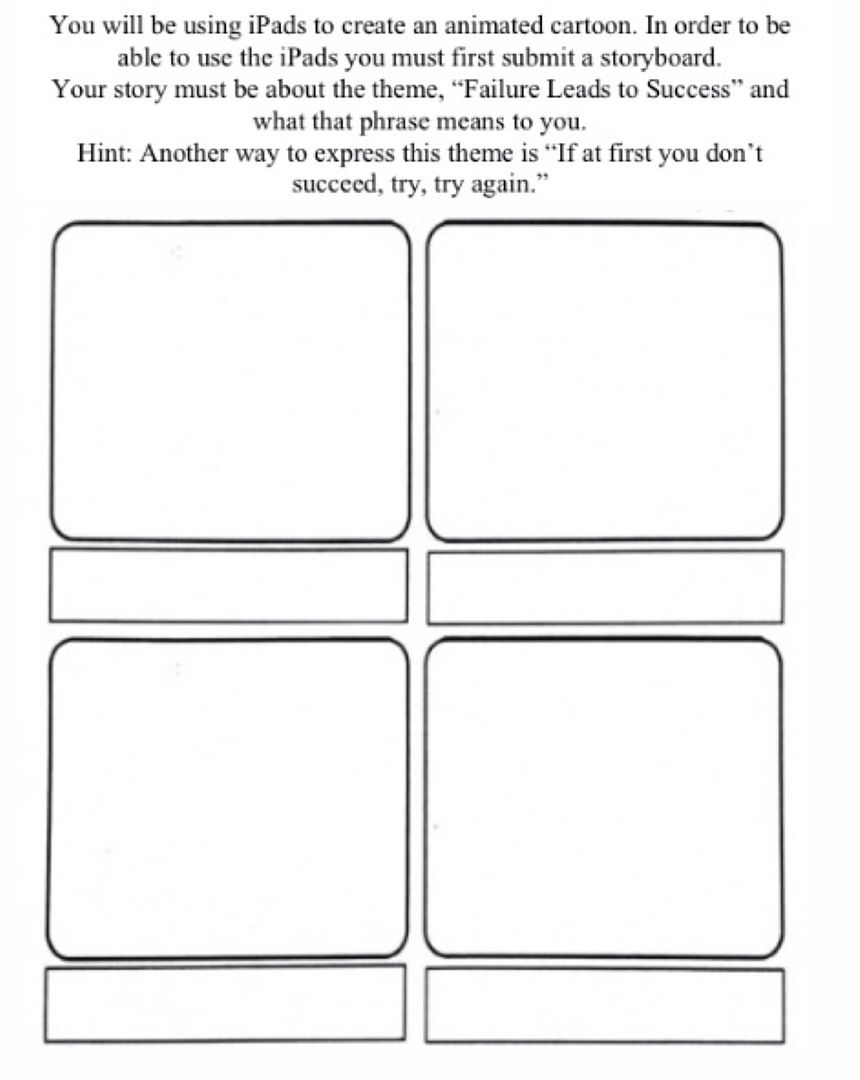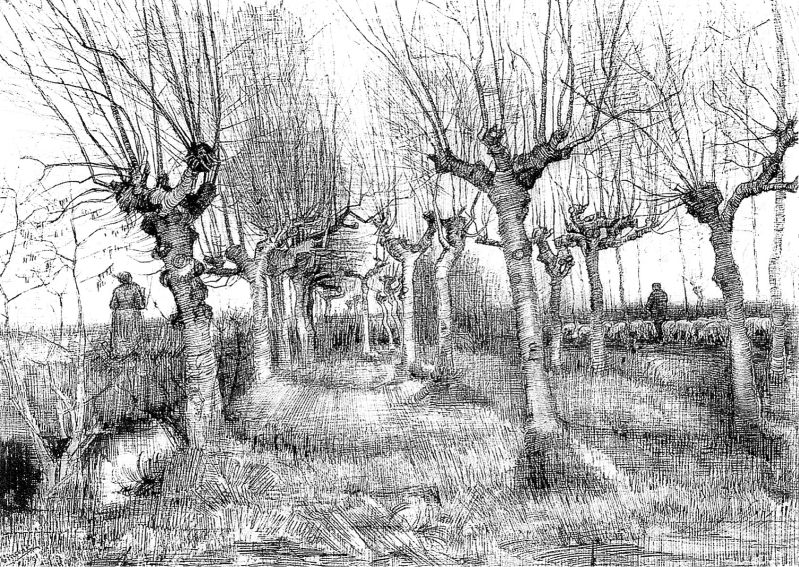 |
| Olive Trees from the sketchbook of Vincent Van Gogh |
How did Vincent Van Gogh use line and texture to bring a landscape to life?
By the Helpful Art Teacher
Tips and Tricks to help you understand his process. The drawings at the very beginning and end are of course Van Gogh's. In between I create a few pictures of my own in an attempt to see through his eyes.
PRINTABLE STEP BY STEP WORKSHEETS
SHOWING VINCENT VAN GOGH'S PAINTING PROCESS
By The Helpful Art Teacher
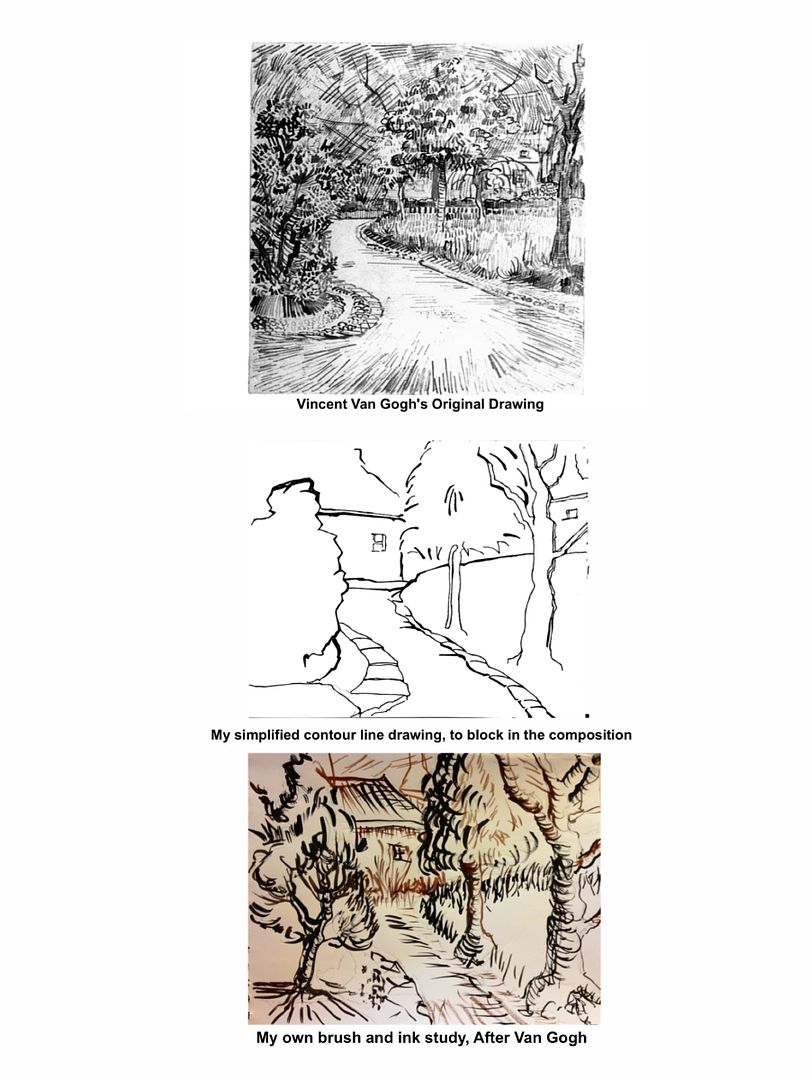
BLACK AND WHITE PRINTABLE VERSIONS OF
VINCENT VAN GOGH'S INK STUDIES
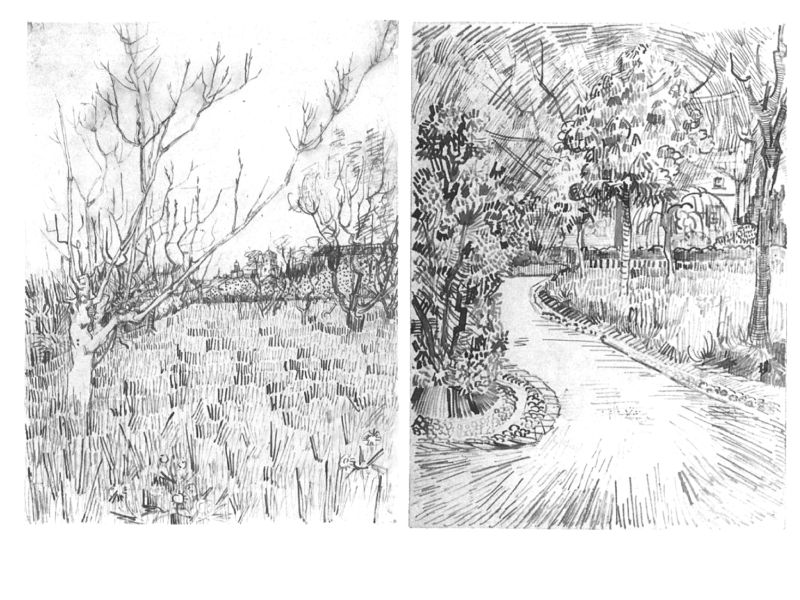 |
| From the sketchbook of Vincent Van Gogh |
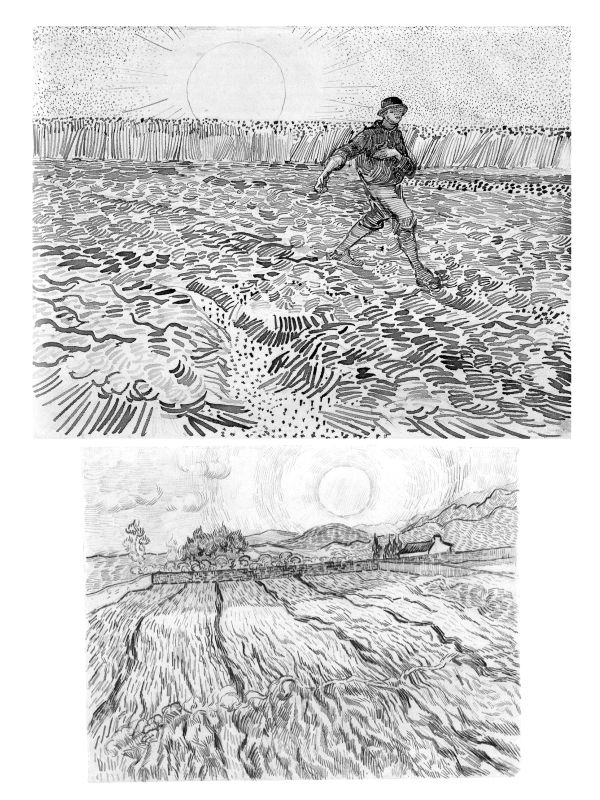 |
| Ink drawings After Millet from the sketchbook of Vincent Van Gogh |
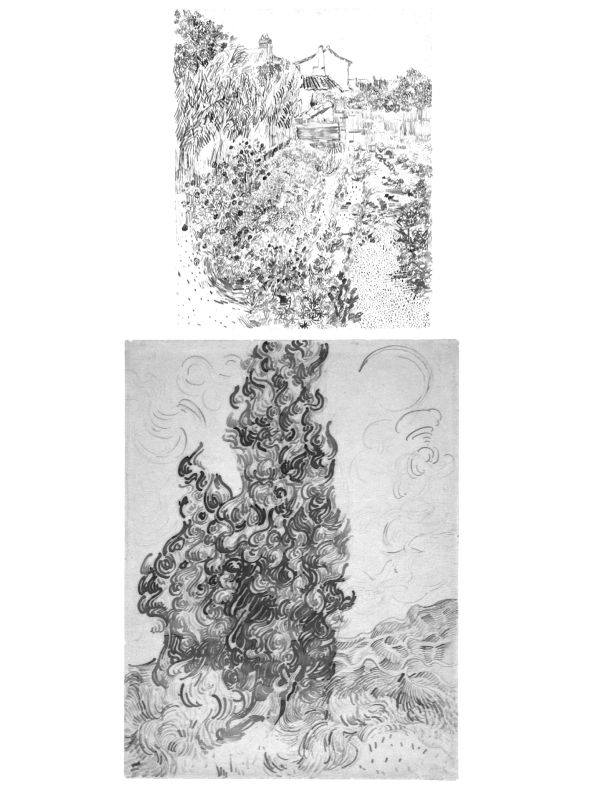 |
| Cypresses Ink drawings from the sketchbook of Vincent Van Gogh |
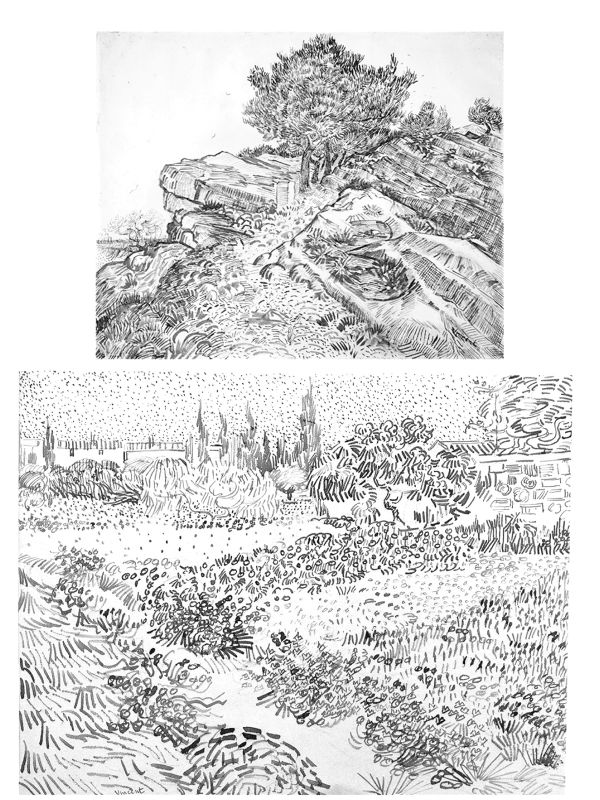 |
| Ink drawings from the sketchbook of Vincent Van Gogh |
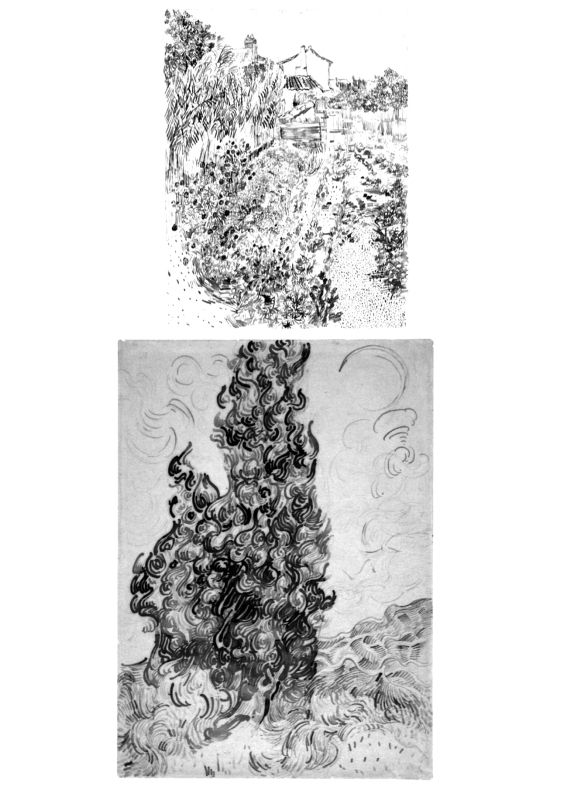 |
| Cypresses Ink drawing from the sketchbook of Vincent Van Go |
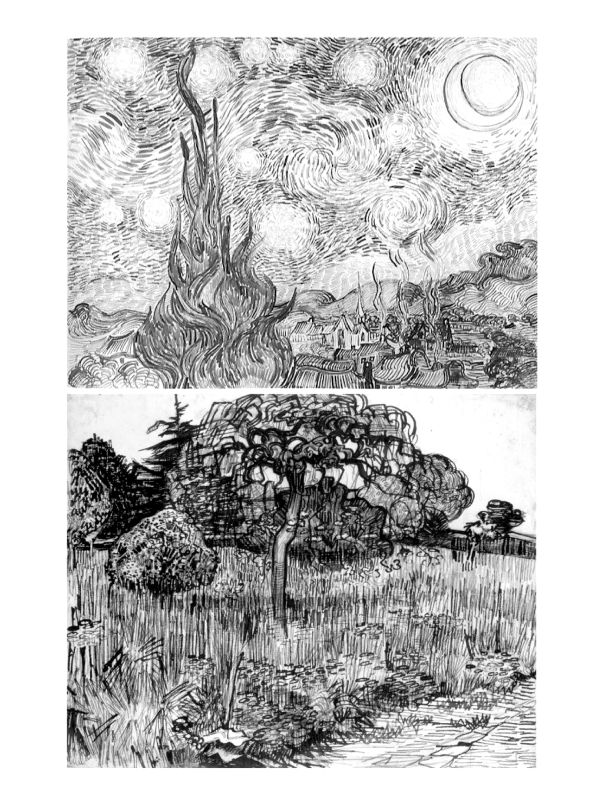
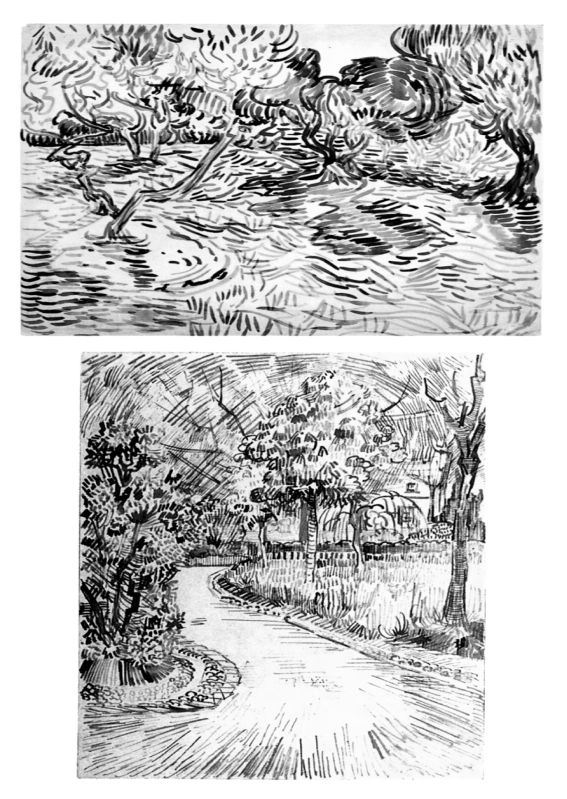
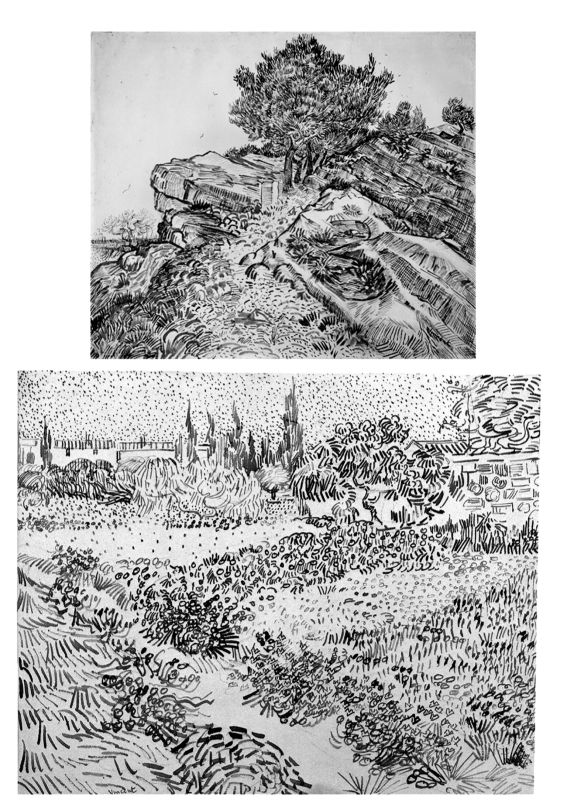
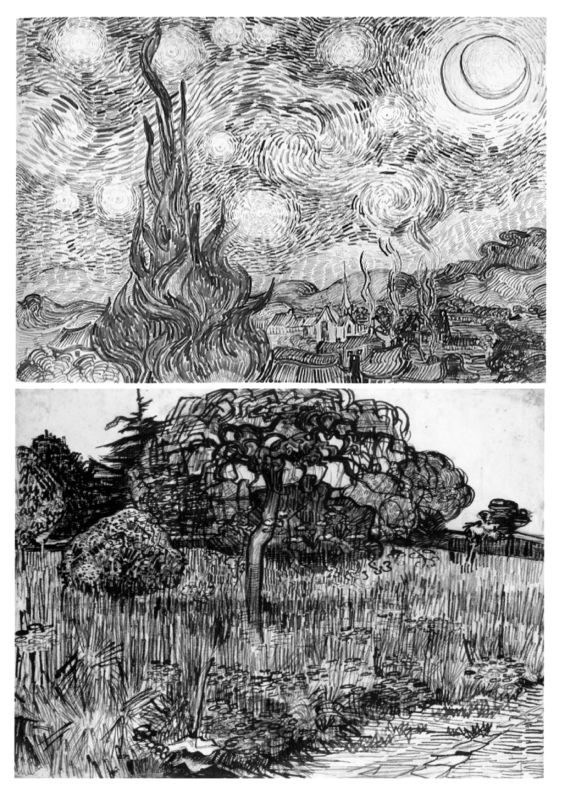

Olive Trees
Ink drawing from the sketchbook of Vincent Van Gogh
PHOTOGRAPHS OF LANDSCAPES THAT ARE DENSELY PACKED WITH A VARIETY OF TEXTURES
I took these photographs in Northern California. The landscape was similar in lushness and climate to the area in Southern France where Van Gogh created many of the sketches above. Feel free to use my photos for your Van Gogh process painting experiments, or better yet, take a walk with your camera and try to find your own densely textured subjects. Try photographing gardens, trees, streets and buildings.
Excerpt from What Makes a Van Gogh a Van Gogh? By Richard Muhlberger http://www.amazon.com/What-Makes-Van-Gogh/dp/0670851981 Copyright The Metropolitan Museum of Art.
Excerpt from What Makes a Van Gogh a Van Gogh? By Richard Muhlberger http://www.amazon.com/What-Makes-Van-Gogh/dp/0670851981 Copyright The Metropolitan Museum of Art.
Excerpt from
What Makes a Van Gogh a Van Gogh? By Richard Muhlberger
http://www.amazon.com/What-Makes-Van-Gogh/dp/0670851981
Copyright The Metropolitan Museum of Art.
Questions for discussion:
Why did the art teacher give out only small brushes?
How am I supposed to fill in the space on my paper, once I begin painting?
STUDENT ART GALLERY:
After Van Gogh by a 5th grade student, instant coffee and black paint on paper
After Van Gogh by a 5th grade student, instant coffee and black paint on paper
After Van Gogh by a 5th grade student, instant coffee and black acrylic paint on paper. Allowed to dry and then
painted with watercolors
After Van Gogh, by a 5th grade boy. Instant coffee on paper
